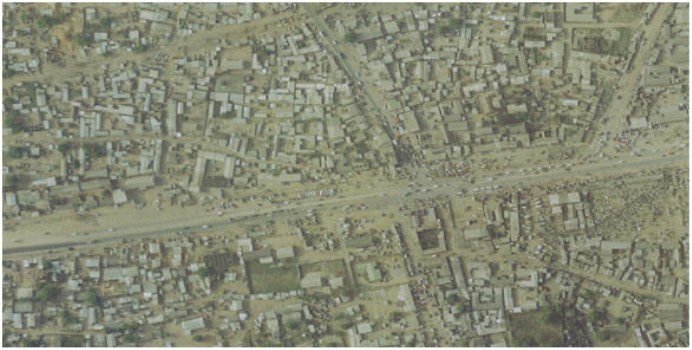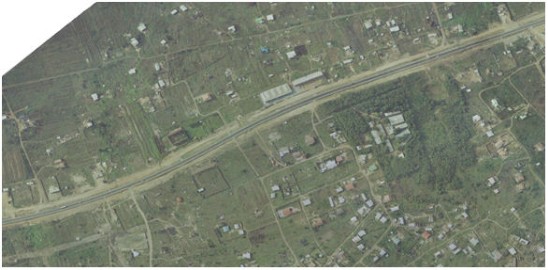LUPMIS
Main menu:
- Home Page
- 1. Background and time frame
- 2. Community Orientation and GIS
- 3. Expected IS activities and output
- 4. Sites of installation and communications
- 5. Data sharing with other LSAs
- 6. Network
- 7. Software
- 8. Human resources and training
- 9. Work activities
- 10. Conclusions and future IS developments
- Annexes
- Annex 1: Projection and datum
- Annex 2: Procurement plan
- Annex 3: Justification of procurement items
- Annex 4: Standards
- Annex 5: Possible scenarios of GIS analyses for land use planning
- Annex 6: DBMS for permits
- Annex 7: GPS mapping
- Annex 8: Data request for GIS
- Annex 9: Financial considerations
- Annex 10: Land use planning activities with IS
- Annex 11: Planning chart: Tasks
- Annex 12: Work programme: Tasks
- Annex 13: Pilot communities
- Annex 14: Coverage of orthophotos for LAP
- Annex 15: Training content
- Annex 16: Glossary
Annex 8: Data request for GIS
Annexes
Annex 8: Data Request for GIS
The primary data used at the LUPMIS are orthophotos (georectified, recent, flown for the Project, in georeferenced TIF format). This is used for:
- Orientation in the field (hardcopy prints, prints from GIS, display on GPS)
- Base for spatial land use identification in the field, in cooperation with the community (see Chapter 2)
- Base for land use mapping (see Chapter 9)

Figure A8.1: Orthophoto, 2005, location at Kasoa junction (5.534° N, 0.426° W)

Figure A8.2: Orthophoto, 2005, location 1 km W of Kasoa junction
Auxiliary, but very important for land use planning, are following data, which have been requested and/or attempt will be made to collect them. Unless specified, they should cover all of Ghana.
- Topography: Contour lines, at the highest possible equidistance (5 or 1 m)
- Topography: Trigonometric / topographic points
- Hydrology: River lines, with drainage classes
- Hydrology: Waterbodies
- Road network (including railroad), with road classes
- Land use, whatever level of detail is available, with land use classification
- Settlements: Built-up areas (as polygons): Urbanized (5000+) including villages
- Settlements: Location of settlements / gazetteer (as points), preferably with census data 2000
- Administrative boundaries: Nation, Regions, Districts, enumeration areas etc,
- Reserved areas: Parks, reserves, protection areas, etc
- Infrastructure: Sites of schools: Primary, secondary, etc
- Infrastructure: Sites of worship: Churches, mosques, etc
- Infrastructure: Sites of water supply: Borholes, and similar
- Infrastructure: Sites of government services
- Infrastructure: Sites of medical care: hospitals, clinics, etc
- Infrastructure: Power supply, power lines, etc
- Infrastructure: Utilities (electricity, water, sewage, telephone) for selected sites, whatever is available, preferably for our first priority areas (Kasoa, Ejisu, Asankagua)
- Development: Sites of proposed development or construction, e.g. tourism, mining, roads, approved by respective authority, e.g. DA, MLFM, MoTransport, MTDA, as polygons, polylines or points
- Geology: Geology, parent material, tectonics, soil distribution (fertility, particle size)
- Digital Terrain Model
- Hillshade, if already processed
- Satellite images, e.g. QuickBird, Spot, Landsat, as far as available
- Cadastral data for our first priority areas (Kasoa, Ejisu, Asankagua)
Further data, whenever available, are useful for land use planning, and can be integrated into LUPMIS:
- Soil, with erosion hazard
- Flood risk / basin
- Traditional sacred groves
- Cemetary and burial grounds
- Places of cultural importance
- Land ownership: Stool, family, government land
- Census data with numbers about population, age, sex, household, natural growth rate, density
- Sites of industry: Major, minor, small, informal
- Market locations
- Other commercial outlets: Permanent, semipermanent
- Government offices
- Petrol stations
- Solid waste locations
- Human waste disposal: Sewerage, communal toilets
- Recreational sites and open spaces: Parks, sport, stadiums, reserves
- etc
When collecting, all data should be in standard GIS formats (e.g. vector in shp, E00 or similar formats, raster in georeferenced TIF or similar), based on WGS 84 and either in lat/long or in UTM.

Figure A8.3: Sample of an input map for land use planning:
Erosion hazard assessment around Kasoa
(Geological Survey Dept / BGR, 2005)
Copyright @ TCPD / LUPMP - version 2.0
Sub-Menu:
- Annex 1: Projection and datum
- Annex 2: Procurement plan
- Annex 3: Justification of procurement items
- Annex 4: Standards
- Annex 5: Possible scenarios of GIS analyses for land use planning
- Annex 6: DBMS for permits
- Annex 7: GPS mapping
- Annex 8: Data request for GIS ←
- Annex 9: Financial considerations
- Annex 10: Land use planning activities with IS
- Annex 11: Planning chart: Tasks
- Annex 12: Work programme: Tasks
- Annex 13: Pilot communities
- Annex 14: Coverage of orthophotos for LAP
- Annex 15: Training content
- Annex 16: Glossary